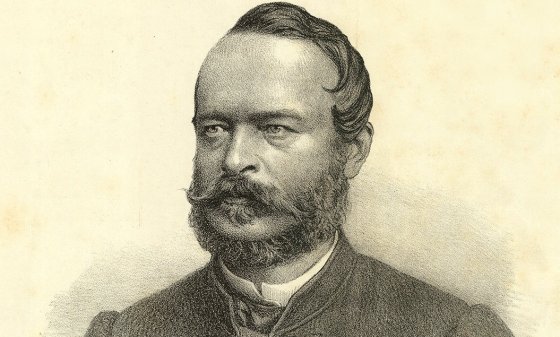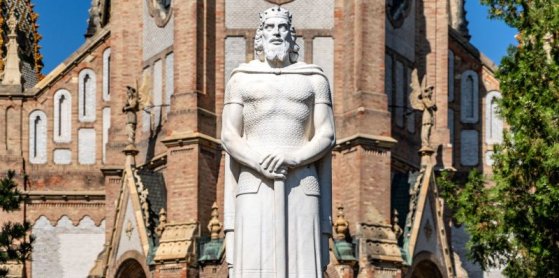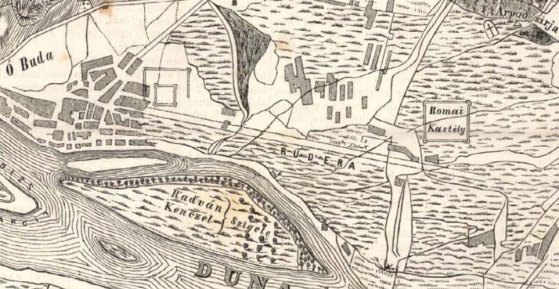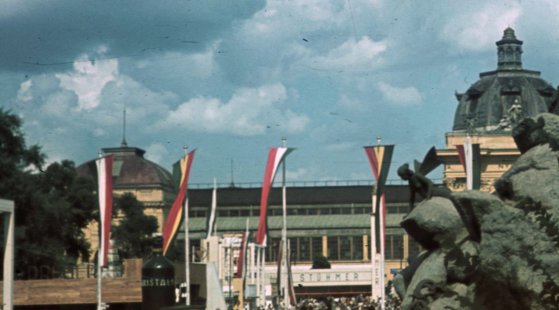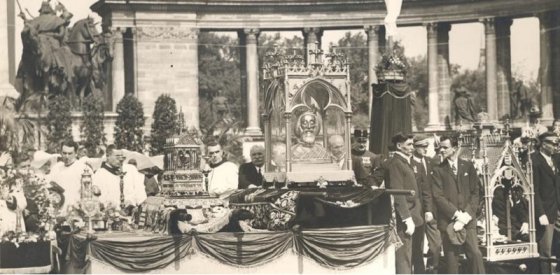 The „intertwined history” of the bridges and the city of Budapest
Which ideas and events have shaped the fate of bridges of Budapest and the cityscape? Alongside many other interesting facts, this question is also answered this newly published book by the Budapest City Archives, which introduces the history of bridges in Budapest.
The „intertwined history” of the bridges and the city of Budapest
Which ideas and events have shaped the fate of bridges of Budapest and the cityscape? Alongside many other interesting facts, this question is also answered this newly published book by the Budapest City Archives, which introduces the history of bridges in Budapest.
history
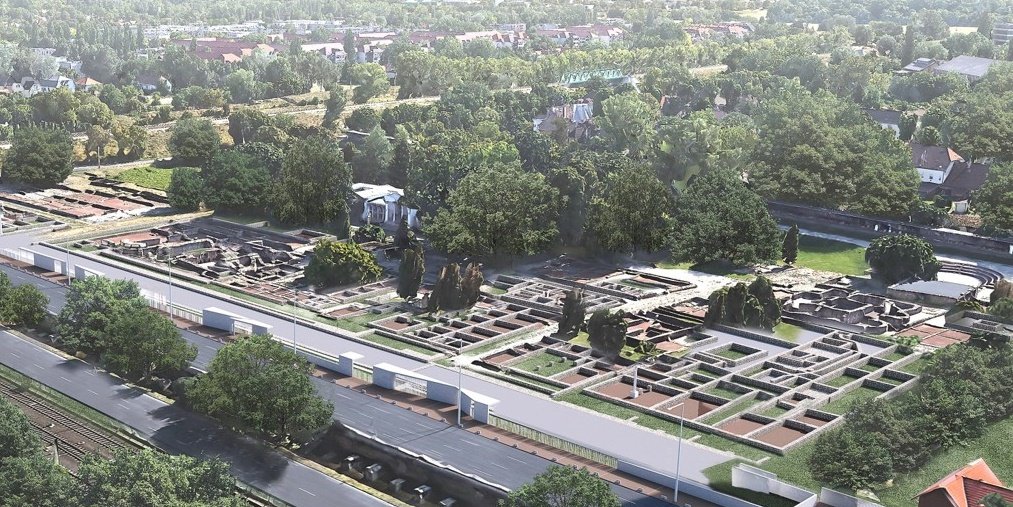 We would like to promote the architectural monuments of the Roman era in Óbuda
We would like to promote the architectural monuments of the Roman era in Óbuda
January 27, 2022 at 3:00 PM
A promenade and a stone archive will also be built during the development that is now beginning at the Aquincum Museum, and the everyday life of the Roman soldiers once stationed here is also planned to be presented to visitors in a spectacular exhibition. We would also like to promote the archaeological and architectural monuments from the Roman Empire in Aquincum and other parts of Óbuda in the 3rd district.
Menyhért Lónyay, the first Minister of Finance following the compromise, was born two hundred years ago
January 7, 2022 at 12:00 PM
Born two hundred years ago, Menyhért Lónyay was a politician, publicist, and the first prime minister of Hungary after the compromise, and a commemoration was held in Budapest.
Kőbánya pays its respects to King Saint Ladislaus
September 27, 2020 at 10:00 AM
Before the stunning church planned by Ödön Lechner in Kőbánya stands a statue of King Saint Ladislaus. The district also houses not only a church, but a respected secondary school, a primary school and a square that bare the name of the saint king. As the cult of Saint Ladislaus is uniquely strong in this part of the city, the district was gifted the statue of saint in 1940, when the nation commemorated the 900th anniversary of his birth. The statue by Károly Antal, was erected before the church as the public sculpture of the king to be placed in Budapest.
Church on Szabadság tér constructed for refugees from territories lost after Trianon
September 22, 2020 at 2:00 PM
A church can be found under 2 Szabadság Square, on the ground floor of a six-storey residential building. Wedged between two other blocks of flats, those walking along the pavement may not even realise that they had walked by a church. Few know that it was built by Hungarian refugees that moved to Hungary from areas annexed by neighbouring countries after the Treaty of Trianon that ended World War I.
Frigyes Schulek designed a church to stand above Prince Árpád's final resting place
September 9, 2020 at 9:00 AM
Following the Hungarian National millennium of 1896, the country celebrated another millennium in 1907: the one-thousand-year anniversary of the death of Grand Prince Árpád, the ruler who led the conquest of the Carpathian Basin. Furthermore, the current ruler, Franz Joseph, also celebrated the 40th anniversary of his rule in the same year. A law passed to commemorate this double millennium stated that the Church built by King Saint Stephen, which had once stood on the outskirts of Óbuda where Prince Árpád was believed to be buried, should be rebuilt. Frigyes Schulek was commissioned to design the building.
Red, yellow, green – The colours of Budapest
August 27, 2020 at 5:00 PM
Ninety years ago, on 20 August 1930, new flags decorated the streets of Budapest. The red-yellow-green tricolour replaced the red-yellow-blue colours in use since 1873. Ten years after Trianon, Act XVIII of 1930 detailed changes to Budapest's flag and coat of arms. One of the reasons behind the change was that the colours of the old Budapest flag and the Romanian flag were the same, but adding the traditional colour of green, Buda to the symbols of the capital was also an important factor.
A holiday missed – The colourful history of Processions of the Holy Right
August 20, 2020 at 2:00 PM
The Procession of the Holy Right, held on 20 August, is the most important religious event in Hungary, and St. Stephen's Day is the most important holiday for all Hungarians. Sadly, this year they will be no fireworks or processions. In an emergency, it is worth looking back into the past, as many interesting and informative events have taken place during the long and tumultuous history of the Holy Right and its processions. The relic arrived in Buda in 1771 courtesy of Maria Theresa, and the first procession took place in 1818 in Buda Castle. In the 19th century, however, the holiday increasingly moved to the Pest side and was already accompanied by national interest.
More articles
 The „intertwined history” of the bridges and the city of Budapest
Which ideas and events have shaped the fate of bridges of Budapest and the cityscape? Alongside many other interesting facts, this question is also answered this newly published book by the Budapest City Archives, which introduces the history of bridges in Budapest.
The „intertwined history” of the bridges and the city of Budapest
Which ideas and events have shaped the fate of bridges of Budapest and the cityscape? Alongside many other interesting facts, this question is also answered this newly published book by the Budapest City Archives, which introduces the history of bridges in Budapest.
 The Bridge Report, which brought a turning point in the history of Budapest
A travel report that changed the history of Pest and Buda, as well as Hungary. The little book contributed to the change of half a thousand years of legal customs and the implementation of an investment of unprecedented size and technical quality. This book was The Bridge Report [Hídjelentés in Hungarian].
The Bridge Report, which brought a turning point in the history of Budapest
A travel report that changed the history of Pest and Buda, as well as Hungary. The little book contributed to the change of half a thousand years of legal customs and the implementation of an investment of unprecedented size and technical quality. This book was The Bridge Report [Hídjelentés in Hungarian].
 Drama on the university wall - The heroic monument was planned 95 years ago
In the constant hustle and bustle of the Egyetem Square in Pest, the students may not even notice the monument that decorates the short section of wall between the church and the central building of ELTE. However, it commemorates their predecessors, the heroes who fought for their country in World War I, and those who heroically helped them. The first design of the dramatically collapsing soldier was born in 1928, ninety-five years ago.
Drama on the university wall - The heroic monument was planned 95 years ago
In the constant hustle and bustle of the Egyetem Square in Pest, the students may not even notice the monument that decorates the short section of wall between the church and the central building of ELTE. However, it commemorates their predecessors, the heroes who fought for their country in World War I, and those who heroically helped them. The first design of the dramatically collapsing soldier was born in 1928, ninety-five years ago.

